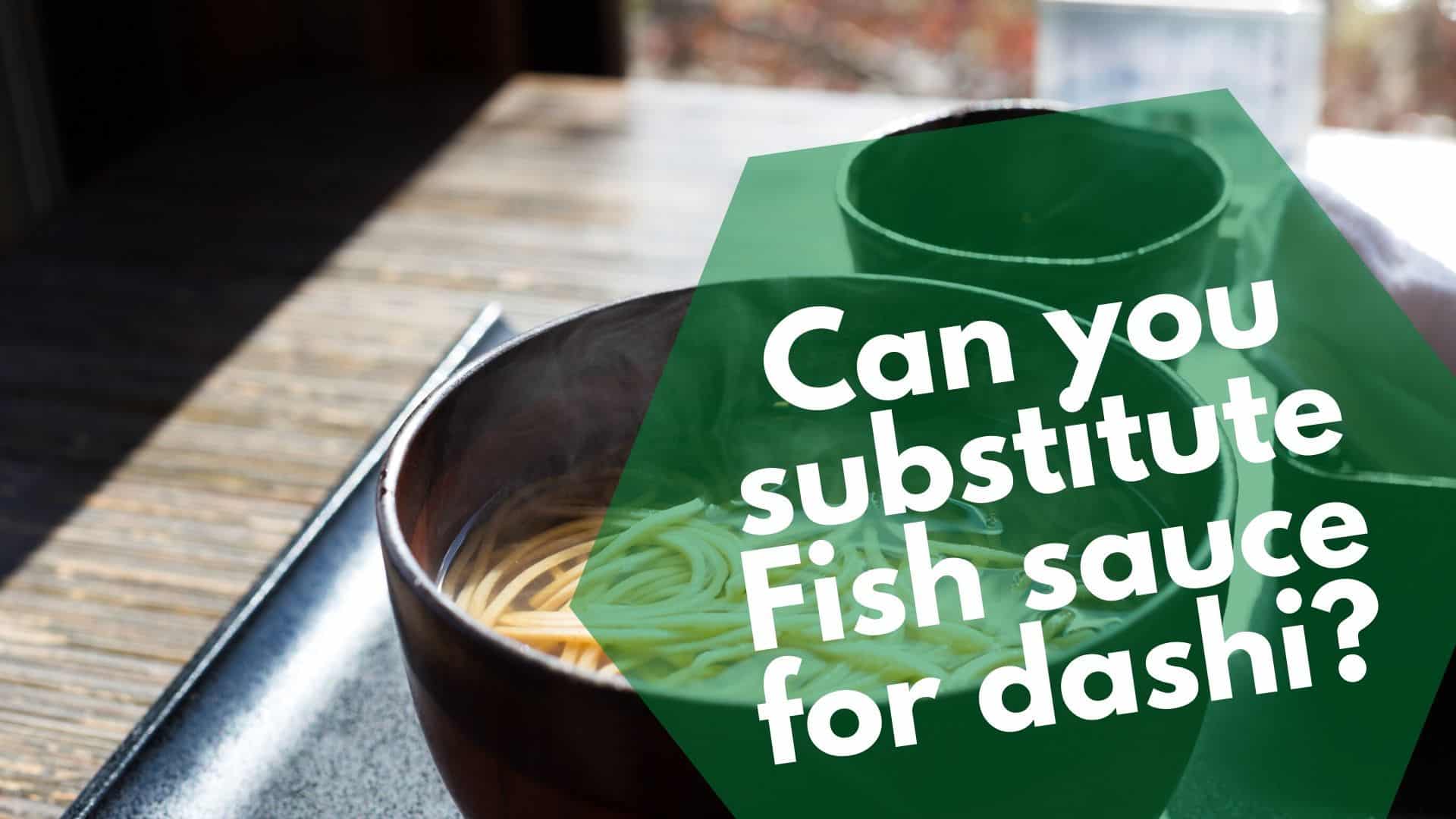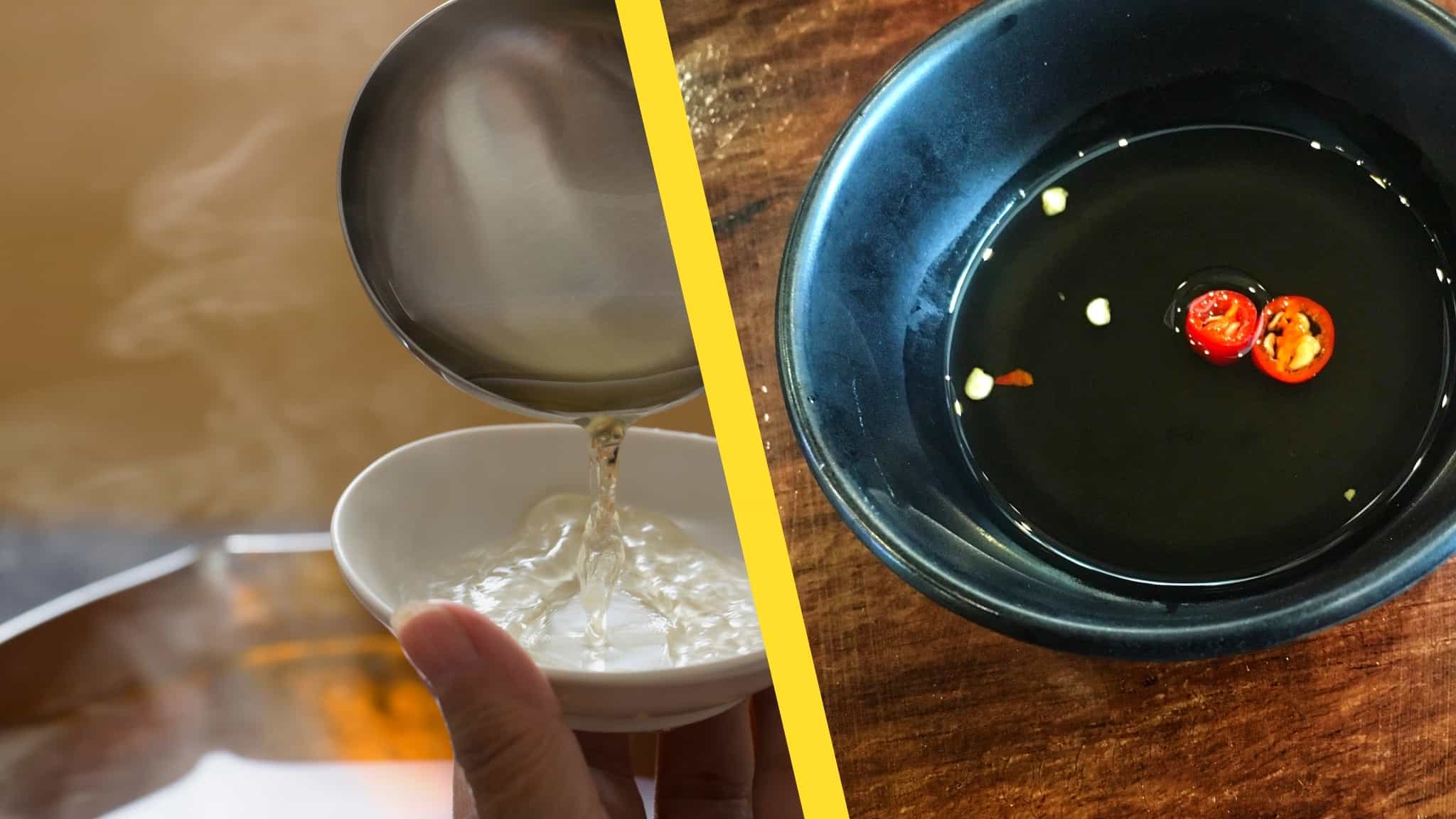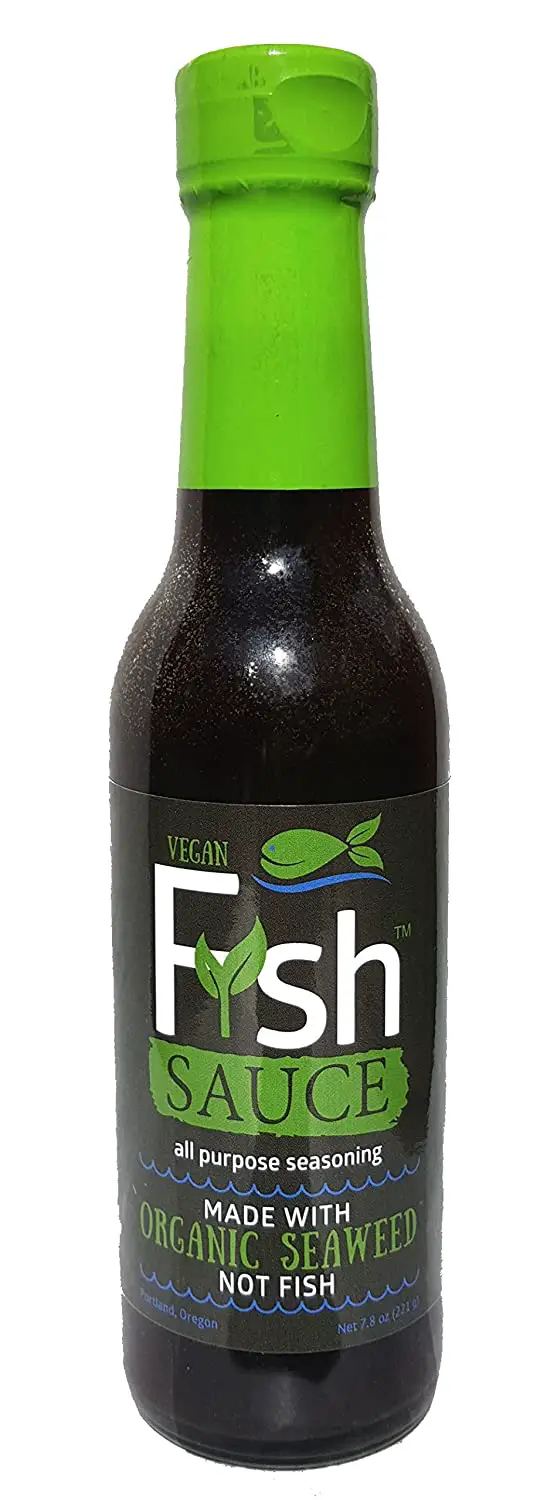Can You Substitute Fish Sauce for Dashi? These 3 are better
We’ve all been there. We’re getting ready to prepare a meal only to find that we don’t have the necessary ingredients.
But with this one, you might not know what to use instead. Do it wrong, and it can ruin the flavor of your dish.
I’m talking about dashi and fish sauce here, and if you’re cooking Japanese cuisine and are out of fish sauce, you might wonder if dashi will do the trick or the other way around.

Dashi vs fish sauce, how do they differ, and can you just use one or the other? They’re quite different so let’s take a look at that.
Fish sauce has a completely different taste than dashi. While both can provide umami for your dish, dashi, although made with katsuobushi fermented fish flakes, doesn’t have that fishy and salty taste. In most dishes, you’ll want to substitute with soy sauce or oyster sauce.
I have some more suggestions and let’s look a little closer at the flavor you want to go for.

Check out our new cookbook
Bitemybun's family recipes with complete meal planner and recipe guide.
Try it out for free with Kindle Unlimited:
Read for freeIn this post we'll cover:
Dashi vs. fish sauce: umami makers but not interchangeable
When you’re cooking Japanese food, the basis is often that classic umami flavor, that usually comes from a dashi stock or a savory fish sauce.
If you’ve had miso soup, you’ve probably tried dashi already, and if you’ve had authentic pad thai, you’ve likely tasted fish sauce too!
Dashi and fish sauce are both popular umami condiments, but they’re different in flavor and texture and should not be used as substitutes for each other.

There is fish in some types of Dashi (dried tuna bonito flakes with kombu seaweed), but it’s not the same as fish sauce, which is thick and black and made from anchovies and salt used in small amounts. Dashi is a clear and thin umami broth used in larger quantities.
What’s the difference between dashi and fish sauce?
Dashi is a popular Japanese stock, and there are two common types: simple, which is a vegan stock made of Kombu (kelp), and a rich seafood flavored dashi made with Kombu and Katsuobushi (bonito flakes), which are made out of skipjack tuna.
Fish sauce is made by fermenting anchovies or krill with salt for an extended period.
When do you use dashi, and when fish sauce?
Both dashi and fish sauce are popular staples in East Asian kitchens, so they’re versatile and go with many dishes.
Dashi, as you may know, is one of the base ingredients in miso soup (besides miso, of course), and it’s also very popular in ramen, tare dipping sauce, marinades, chawanmushi (egg custard), and nimono (food simmered in Shiro stock).
Fish sauce can be used as a substitute for salt. It’s commonly found in dishes that require a strong seafood/fish flavor.
It’s widely used in pad thai, salad dressings, marinades, stir-fries, sauteeing greens, broths, chicken dishes, and even pasta and noodles. It gives a savory and unmistakable flavor.
One heads up though, fish sauce is very strong, and a little goes a long way. You probably only need to use a teaspoon or two to infuse any dish with a fishy taste.
And that’s also why it’s not a good substitute for dashi, because that adds flavorless umami to dishes.
Can You Substitute Fish Sauce for Dashi?
Both dashi and fish sauce can be used to provide umami flavor, the secret to a lot of Japanese dishes. But each will give the dish an entirely different taste.
In most circumstances, one should not be used instead of the other.
Dashi and fish sauce both have a fish background so it’s easy to see why you might think one would make a good substitute for the other.
But what dashi lacks is the fishy taste. So, if you’re looking for that in your food, you will be sorely disappointed.
What is dashi?
Dashi is a family of stocks used in Japanese cuisine. It is commonly used to make miso soup, clear broth, and noodle broth soup.
It can be used to provide an umami flavor. It can also be combined into flour bases to flavor dishes like okonomiyaki and Takoyaki.
If you’re looking for dashi alternatives, check out my post over here
Dashi is best known for its umami taste, a combination of salty, savory, and delicious flavor that lingers on the tongue.
If the dashi contains bonito flakes or other seafood, it can take on a slightly fishy taste, but it’s much lighter than fish sauce.
But, dashi on its own isn’t very salty, so you shouldn’t use it as a salt substitute.
There are different dashi types, but the most common are vegan Kombu dashi and Katsuobushi dashi.
Vegan dashi is a simple, lightly-flavored stock made from only a couple of ingredients like cold-brewed Kombu, a large seaweed type, and cold water. The seaweed is very flavorful and salty, so it imparts an umami flavor when used in dishes.
Katsuobushi is another type of dashi, but it’s made with Kombu and bonito flakes (skipjack tuna). Some people like to add dried sardines, dried shiitake mushrooms, and even adzuki beans or toasted soybeans for more complex dashi flavors.
It all comes down to how much flavor you’re after.
Of course, there are many types of dashi you can try, including Maguro (tuna), Saba (mackerel), and Iwashi (sardine), which have the strongest and fishiest flavor.
The texture is like that of a soup broth, and it’s very liquidy, so it’s much thinner than fish sauce.
If you don’t want to make your dashi at home, you can buy dashi stock from Riken on Amazon.
Another great brand is Hikari, as they make dashi miso, which you can use in miso soup.
Dashi nutrition
In general, dashi has a low glycemic index, but it’s has a lot of sodium, even though it doesn’t have a strong salty flavor.
Since it has a high sodium content of about 44% of an adult’s daily recommended intake, those with cardiovascular disease and diabetics should be careful about how much dashi they consume.
Here are some nutritional facts about dashi:
- Calories per serving: 430 calories
- Fat: 14 g
- Sodium: 1000 mg
- Protein: 17 g
Dashi is low in cholesterol and sugar, and it doesn’t contain trans fats.
The Kombu kelp is a nutritious food because it’s rich in antioxidants. It contains iodine, which contributes to a healthy thyroid. It is also a good source of iron, calcium, and vitamins A, and C.
Check out these 3 easy recipes using Dashi Stock + steps to make at it home
What is fish sauce?
Fish sauce is a liquid condiment made from fish or krill coated in salt and fermented for up to two years. It’s a staple seasoning in Asian cuisine.
It brings immediate saltiness and adds a ton of fish flavor to many soups, stir-fries, noodles, and other meats.
It’s made by fermenting small fish-like anchovies with salt for anywhere from a few months to a few years!
Fermented fish has been popular in Asia for centuries because this method preserves the fish but also makes for some flavorful dishes.
The anchovies are stored in large barrels and covered in salt. Naturally occurring bacteria begin to break down the fish, resulting in a briny and savory liquid, which is essentially the sauce.
The flavor is a rather interesting mixture of funky brininess, pungent fishiness, saltiness, and a slight sweetness. While it’s also a bit earthy, fish sauce is considered to be another classic umami-flavored condiment.
Fish sauce texture is similar to soy sauce, even with the same brown color. However, it’s a bit more viscous and different than dashi stock.
Also read: Is Anchovy Sauce the Same as Fish Sauce?
Fish sauce nutrition
Fish sauce contains sodium, but it’s a bit of a better low-sodium alternative for salt. Again, as with dashi, people sensitive to salt should consume low quantities of fish sauce.
When it comes to health benefits, fish sauce is not a very nutritious food, but it does have small amounts of beneficial properties. It is a good source of protein and contains a small amount of calcium.
1 tbsp of fish sauce contains about 6 calories, so it’s a low-calorie condiment.
1 tbsp of fish sauce also has:
- Sodium: 1400 mg
- Potassium: 51 g
- Protein: 0.9 g
- Carbs: 0.7 g
The top brand of Vietnamese-style fish sauce is Red Boat because it’s made with only two ingredients: anchovies and salt, and has a pure fishy flavor.
If you’re looking for a premium fish sauce, then the Megachef Thai Fish Sauce is a great option because it’s also pure without added ingredients that deter from the fishy taste.
What are Good Substitutes?
Fish sauce is essentially fish soy sauce. Therefore, soy sauce is most commonly used as an alternative for this condiment.
However, once again, you won’t get the fishy flavor you want. It can also be replaced with the salty seasoning tamari shoyu, which is basically a gluten-free soy sauce used in Japanese sushi restaurants a lot.
Now, if you have oyster sauce, that’s probably the best alternative for fish sauce as it also has this strong fishy and salty taste.
Although you might be looking for an alternative to fish sauce because you want to get that same taste, but in a vegan-friendly form.
You have this great vegan fish sauce brand called tofuna fysh which does the trick really well:

Other sauces often used to replace the taste are:
- Coconut aminos
- Worcestershire sauce
- And a Mushroom and soy sauce broth
If you’re looking for an alternate for dashi, any other stocks that are umami-based will work.
A light vegetable stock would be a worthy substitute or dashi variations like kombu dashi or dashi made of shiitake mushrooms would also do well, and again, look at the article I made specifically about that.
So the next time you are out of fish sauce, don’t look at dashi to take its place. However, these other suggestions just might give your meal what it needs.
Bottom line
Both dashi and fish sauce are versatile foods that enhance and infuse Asian and Western dishes with umami flavor.
They are both savory and add a strong flavor to soups, stir-fries, and sauces.
While fish sauce undoubtedly has a strong fish taste, in many cases, dashi also contains seafood ingredients such as bonito flakes.
But for a vegan dashi version, stick to kelp alone.
More on this topic: Can You Substitute Fish Sauce for Dashi? These are better
We have all of these hon dashi substitutes over here you can try out
Check out our new cookbook
Bitemybun's family recipes with complete meal planner and recipe guide.
Try it out for free with Kindle Unlimited:
Read for freeJoost Nusselder, the founder of Bite My Bun is a content marketer, dad and loves trying out new food with Japanese food at the heart of his passion, and together with his team he's been creating in-depth blog articles since 2016 to help loyal readers with recipes and cooking tips.
